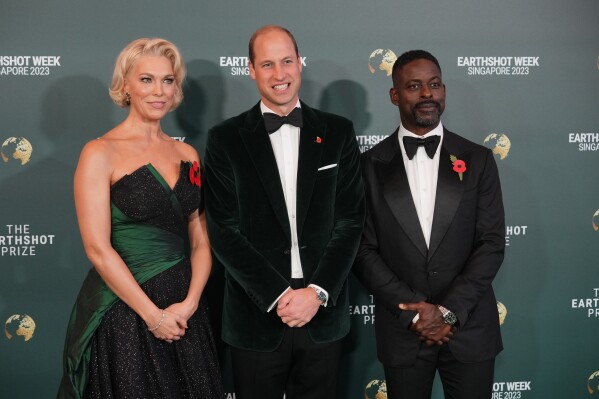AP PHOTOS: Singapore gives the world a peek into our food future
Like much of the rest of the world, Singapore is racing to feed a growing population with limited natural resources. But with almost no land for agriculture this small, wealthy, fast-paced and densely-packed nation is doing so by embracing and encouraging new food technologies that may someday help feed us all.
In 2019 Singapore launched a program called 30 by 30, designed to spur the country to produce 30% of its food by 2030, while still using less than 1% of its land for agriculture. The program has encouraged innovation that may offer a peek into the world’s food future as land and resources become more scarce around the world. ___
EDITORS’ NOTE — This story is part of The Protein Problem, an AP series that examines the question: Can we feed this growing world without starving the planet? To see the full project, visit https://projects.apnews.com/features/2023/the-protein-problem/index.html
___
 Son called in for South Korea as Asia’s leading teams enter qualifying for the 2026 World Cup
Son called in for South Korea as Asia’s leading teams enter qualifying for the 2026 World Cup
 Prince William hopes to expand his Earthshot Prize into a global environment movement by 2030
Prince William hopes to expand his Earthshot Prize into a global environment movement by 2030
 Prince William awards the Earthshot Prize to 5 winners and credits the finalists for giving hope
Prince William awards the Earthshot Prize to 5 winners and credits the finalists for giving hope
There are rooftop farms that produce greens such as kale, lettuce and herbs using a system that relies on nutrient-rich water instead of soil, powered by solar panels. Shrimp are grown in warehouses. The company’s largest egg farm uses automated machines to feed the chickens and sort, scan and check each egg.
Researchers are working to develop varieties of plants that can flourish in extreme, unnatural environments — and ways to grow lobster in a lab, from cells.
But for all the country’s government-supported entrepreneurs and sparkling new technology, the country is also learning that this kind of transformation is not so easy.
Consumers can be reluctant to change, and producers have found it hard to turn a profit because costs are high.
It is far from clear Singapore will reach its 30% goal by 2030. But along the way it may help teach the world — through successes and failures — how to reduce the amount of land needed to produce our favorite dishes.
___
The Associated Press Health and Science Department receives support from the Howard Hughes Medical Institute’s Science and Educational Media Group. The AP is solely responsible for all content.
Disclaimer: The copyright of this article belongs to the original author. Reposting this article is solely for the purpose of information dissemination and does not constitute any investment advice. If there is any infringement, please contact us immediately. We will make corrections or deletions as necessary. Thank you.


